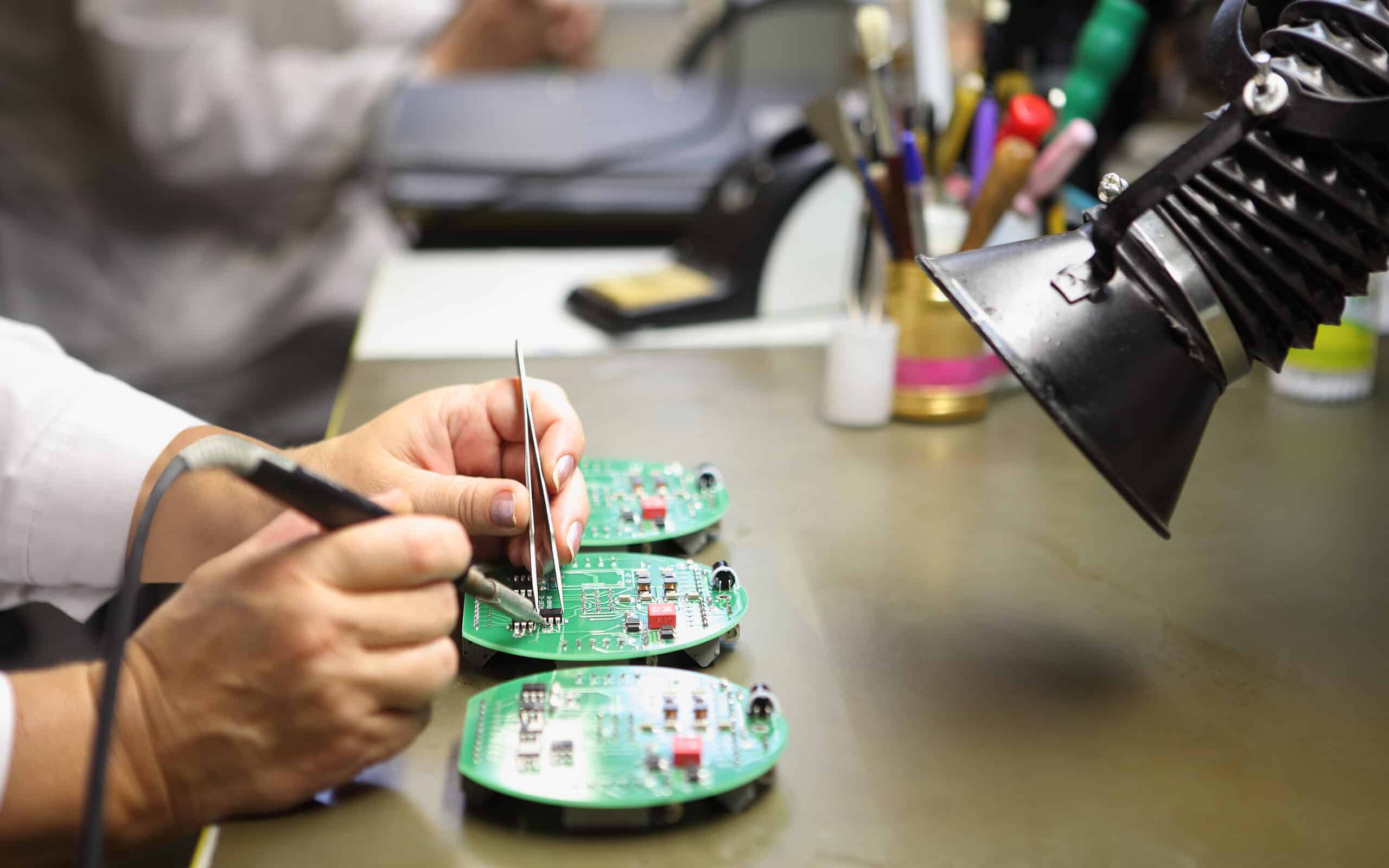
Key Points
- Samsung was suffering from quality issues in the late 1990s.
- Adopting Six Sigma saw the company transform completely in the space of three years.
- Samsung now is an industry leader in the tech space.
With strategic implementation, Six Sigma can do wonders for an organization. The methodology can drastically improve processes, cut down on waste, and even help provide better results in the design and R&D of new products. Samsung found that it was having issues with all of the above and, in 1999, conducted a complete overhaul of the way it did business to make major improvements and bring its company into the future.
When Samsung introduced the Six Sigma methodology into its organization, it started with one project, but that quickly evolved into thousands within a couple of years. Each of these projects utilized the Six Sigma tool known as DMAIC. The company quickly saw the value of Six Sigma and this tool and worked towards incorporating it into every aspect of its operations to become the industry leader that it is today.
Samsung Had a Problem

Samsung Electronics Company began in Seoul, South Korea, in 1969. Its first product to enter the market was a television receiver in 1971. Throughout the first thirty years of its existence, the organization incorporated a wide variety of tools and techniques to improve. Some of these included total quality control, product data management, customer relationship management, and supply chain management.
By 1999, however, Samsung was finding large quality variations across several products. Not only that, but they were finding the same defects occurring repeatedly. Excessive quality costs related to failures were being reported, and there was an insufficient amount of unified information for productivity and quality.
It was concluded by Samsung that the keys to making improvements in these areas would be focusing on statistical and scientific approaches to product quality, eliminating waste from processes, and developing a system of continuous learning. To make these changes, a complete overhaul would be necessary.
A contract was made in 1999 between Samsung SDI and Six Sigma Breakthrough, Inc. This one-year contract for $3.4 million was meant for SSBI to help integrate Six Sigma into every area of Samsung SDI that could be helped.
The process began towards the end of 1999 and into the beginning of 2000 with the training of Samsung’s management and other employees who would be responsible for the deployment of the new Six Sigma program.
Samsung Expanded its Use of Six Sigma’s DMAIC Process
Samsung’s integration of Six Sigma expanded to utilize the Six Sigma DMAIC process in manufacturing and the design stage of developing new products. This process is a cornerstone of the Six Sigma method and involves five phases. These phases are: Define, Measure, Analyze, Improve, and Control.
During the Define phase of DMAIC, the problem to be addressed is defined. Also defined are the goals of the project, areas for improvement, and the requirements of the customer.
In the Measure phase, the primary activity involves measuring how the current process is performing with the expectations of customers. Six Sigma tools utilized during this phase include process maps, capability analysis, and Pareto charts.
In the Analyze phase of DMAIC, the root causes are found through analysis of the process. This is accomplished using Six Sigma tools like root cause analysis, failure mode and effects analysis (FMEA), and a multi-vari chart.
The Improve phase of DMAIC is the actual improvement effort that is implemented. This involves addressing the root causes that were determined during the Analyze phase and eliminating them. Six Sigma tools typically used during this phase include the design of experiments (DOE) and Kaizen events.
The final phase of DMAIC is Control, and its purpose is to lock down the improvements that have been made so that the issues do not occur again. Six Sigma tools used during this phase include statistical process control, mistake proofing, 5S, and the use of a control plan.
Transforming a Business
After bringing the DMAIC process to new product development and manufacturing, Six Sigma was used for transactional purposes to improve Samsung’s internal and external business and support services. This meant addressing what had become critical customer interactions and needs.
The Six Sigma deployment extended even further into the development of Sigma Park. This was a worldwide intranet site that united all of Samsung’s facilities. It provided reference materials, opportunities for benchmarking, and Six Sigma project enhancement when projects extended across several countries.
Within three years of deployment, the number of Samsung employees who were accomplished enough in Six Sigma methodology to achieve either Master Black Belt, Black Belt, or Green Belt status reached over 15,000. This accounted for one in three Samsung employees.
The Outcome Was Incredible

Implementing Six Sigma led to a whole slew of financial benefits for Samsung. By 2002, cost savings, increased sales profits, and new product development all grew to a total of 1.5 billion dollars. The Six Sigma projects conducted between 1999 and 2001 also led to a reduction in defects by 50%.
Earned net income increased to a total of $2.2 billion on $24.4 billion in total revenue. Samsung’s debt-to-equity ratio became lower than any company operating at the same level, and its operating profit ratio exceeded that of any of its competitors.
At the time that Samsung was implementing these changes, there was a downturn in the world economy. Despite this downturn, Samsung was able to report an operating profit of 8.5%. Credit for this ability to maintain a significant profit is due to the integration of Six Sigma into its processes.
With its Six Sigma overhaul, Samsung became one of the leading electronic manufacturing companies in the world. Its achievements were recognized by Business Week magazine, which named Samsung number one in its 2002 information technology guide.
Samsung’s improvements also changed the perception of the company on the world market, leading it from being nearly unknown in the United States to the U.S. accounting for 37% of Samsung’s total yearly sales.
Six Sigma also changed the culture at Samsung, which has been a major factor in the organization’s ability to continually improve since. By bringing Six Sigma into the way it does business, Samsung has made it so that the main motivator for employees is delivering quality to customers.
Employees at Samsung credit Six Sigma’s emphasis on quality for driving the organization’s profit growth, increase in customer satisfaction, higher sales, and ability to cut costs.
What It Means for Your Organization
We’ve talked at length about how Samsung transformed its fortunes with Six Sigma. However, what does that mean in the context of your organization? If you’ve found your company spinning the wheels, implementing Six Sigma might be what you need to get things back on track.
Remember, Samsung was a flagging tech company before becoming an industry leader in just a matter of a few years.
5 Best Practices When Incorporating Six Sigma Into an Organization
A flattening of Samsung’s organizational structure was necessary to make a complete overhaul of the company’s operations using Six Sigma. Whether a company is looking toward having Six Sigma improve all aspects of how it operates or opts to focus on just one area of the business, some key practices need to be upheld. Samsung credits the following best practices for its initial and continued success with Six Sigma:
1. Gain support from top management
A key factor in success when working with Six Sigma in your organization is having support from top management. Running a Six Sigma project requires the allotment of dedicated resources toward the cause, and this means top management will need to approve the use of these resources.
Doing so will keep the project on target as well as do a great deal toward convincing other employees to give their full support to maintaining the integrity of the project as well.
2. Employee acceptance and implementation
Making a Six Sigma project work will require that everyone involved is on board. Include any employee who is working with the system. The desired results come through proper training as well as making the employees accountable for the project’s success. Regular communication and the sharing of success stories will also help keep employees enthusiastic about the program. It will also be necessary to not divert employee attention away from the Six Sigma project with other tasks that are outside of the project parameters.
3. Have all innovative and infrastructure activities linked with the program
This applies only to organizations that are using Six Sigma in every aspect of how they choose to do business, but it is a key factor in Samsung’s phenomenal success. Samsung chose to use Six Sigma in all areas of decision-making, including the R&D of new products.
This ensured that the changes that the organization was making to its processes would be maintained throughout its efforts to innovate long into the future and that improvements made would not be undone in the manufacturing of the company’s next exciting products.
4. Accuracy and fairness in the evaluation of projects
To properly track the effects that Six Sigma was having on the company, Samsung made a practice of accurately and fairly evaluating all of its Six Sigma projects. This openness to the results allowed the organization to have a real sense of how much true improvement was coming from using the Six Sigma method and led to the organization utilizing the method on thousands of improvement projects.
By being transparent and accurate with its data, Samsung was able to get the support needed to weave Six Sigma into every part of its operations and transform the company into the industry leader that it has become.
5. Recognize and reward employees
By recognizing and rewarding employees who had an impact on Six Sigma projects, Samsung was able to maintain support and enthusiasm for the program. Showing your employees their value and how integral they are to the success of these projects will not only go a long way toward the project’s outcome but will be a key factor in their active involvement in further improvement efforts.
Other Useful Tools and Concepts
Looking for other ways to listen to the voice of the customer? Understanding Cpk is a vital component of any production line. Capability performance indices clue you into exactly how your processes are performing and what needs to be fixed.
Additionally, you might need to understand how CTQ outputs can affect your production line. These qualities translate to customer demands, letting you meet their mark for quality.
Samsung’s Integration of Six Sigma Made It a Global Industry Leader
Samsung was already a very successful company before it adopted the Six Sigma method, but the organization had its share of problems. Once it realized that these problems were holding the organization back, a complete overhaul of its operations transpired throughout thousands of Six Sigma projects in just a couple of years.
The changes to the company as a result of these Six Sigma projects made Samsung a worldwide leader in the electronics industry. Whether a company is a massive one like Samsung or a small mom-and-pop shop, all organizations can look to Six Sigma as a proven system for quality improvement.